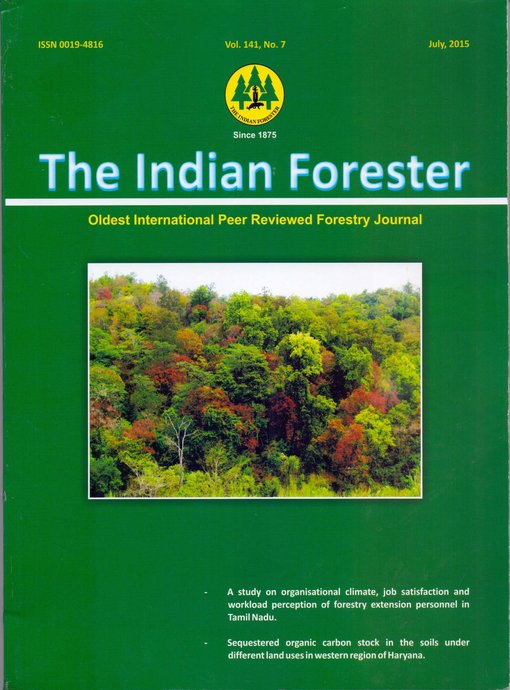Shrinkage Differential of Wood as a Tool to Monitor Drying Stresses
DOI:
https://doi.org/10.36808/if/2015/v141i7/73930Keywords:
Drying Schedules, Drying Stresses, Stress Reversal, Wood Shrinkage.Abstract
The shrinkage pattern of wood provides some important information to monitor the drying stresses. Knowledge of timing, severity and reversal of the drying stresses may help to develop faster kiln drying schedules. Tangential shrinkage at core and shell layers of wood was measured in intact condition and slices were cut from exactly same layers. The slices were allowed to relieve their stresses first and then oven dried. The results indicate that shell layers of the wood are affected by higher magnitude of the drying stresses as compared to core layers. The results also indicate that after the stress reversal in wood, the rate of tangential shrinkage of wood also changes. In 41 days of drying, the stress reversal and shift in rate of intact shrinkage of wood in tangential direction coincided on day 21 of the drying. This work demonstrates that it is possible to determine the timing of the stress reversal by monitoring the rate of the change of wood shrinkage in tangential direction.References
Alexiou P.N. Wilkins A.P. and Hartley J. (1990). Effect of pre-steaming on drying rate, wood anatomy and shrinkage of re-growth Eucalyptus popularis SM. Wood Science and Technology, 24:103-110
Allegretti O. and Ferrari S. (2008). A sensor for direct measurement of internal stress in wood during drying: experimental tests towards industrial application. Drying technology, 26 (9):1150-1154.
BIS (1985) Determination of moisture content of timber and timber products. IS: 11215-1985. Bureau of Indian Standards, New Delhi
Cheng W., Morooka T. and Liu Y. (2007). Characterization of tangential shrinkage stresses of wood during drying under superheated steam above 100°C. Forest Products Journal 57(11): 39-43.
Ferrari S., Pearson H. and Gabbitas B. (2010). Measurement of internal stress in Radiata pine sapwood during drying using an improved online sensor. Holzforschung, 64(6): 781-789.
Fuller J. (1996). Kiln control based on changing shrinkage rate. US Patent No. 5,873,182,United States Patent.
Fuller J. (1999). Determining the source of changing shrinkage rates during kiln drying. Drying Technology, 18(1):261-278.
Fuller J. (2000). Additional sources of changing shrinkage rates during kiln drying. Drying Technology, 18(4&5):1023-1032.
Honeycutt R.M., Skaar C. and Simpson W.T. (1985). Use of acoustic emissions to control drying rate of Red Oak. Forest Products Journal, 35(1):48-50.
Kwon O. and Hanna R.B. (2006). Determination of Drying Stresses of Wood Using the Enhanced Digital Image Correlation (EDIC) Technique. Proceedings: Forest Products Society 60th International Convention, California ,USA.
McMillen J.M. (1955). Drying Stresses in Red Oak. Forest Products Journal, 5(1):71-76.
Naguchi M., Kagawa Y. and Katagiri J. (1980). Detection of acoustic emissions during hardwood drying.Mokuzai Gakkaishi, 26:637-638.
Pandey C.N and Jain V.K. (1992).Wood seasoning Technology. Published by the Editor, Editorial board, FRI, Dehradun, on behalf of ICFRE.pp136.
Reitz R.C. (1950). Accelerating the Kiln drying of hardwoods. Southern Lumberman, 181(2262):43-46.
Schniewind A.P. (1960). On nature of drying stresses in wood. Holzforschung 12(6):161-168.
Stohr H.P. (1988) Shrinkage differential as measure for drying stress determination. Wood Science and. Technology, 22:121-128.
Downloads
Downloads
How to Cite
Issue
Section
License
Unless otherwise stated, copyright or similar rights in all materials presented on the site, including graphical images, are owned by Indian Forester.





